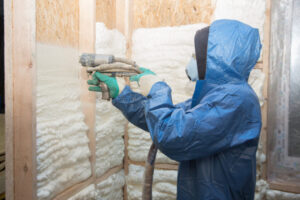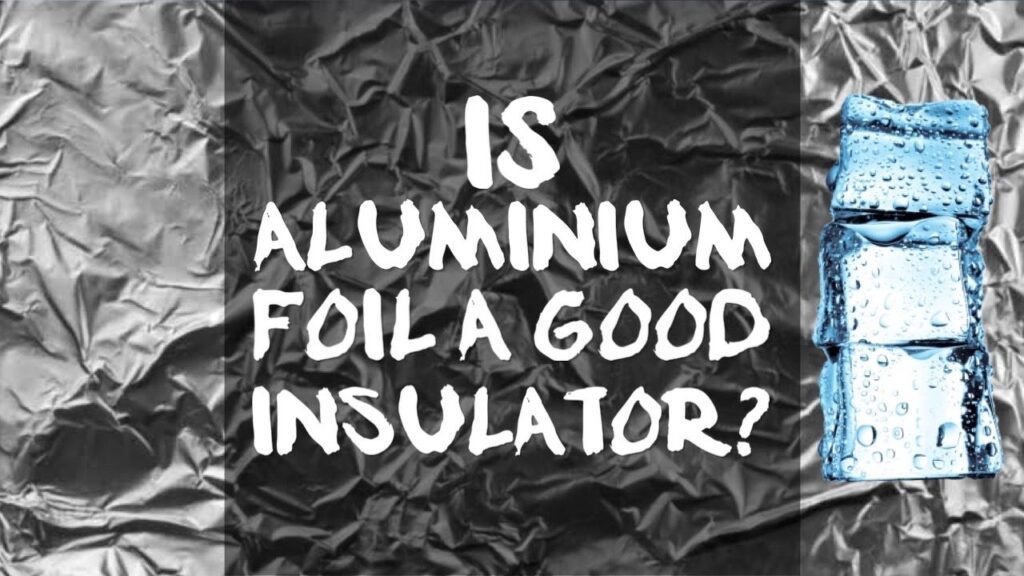
Aluminium foil is used to keep food warm, soft coolers cold and is even used in housing insulation and space blankets for hikers. But as a metal doesn't this mean it conducts heat well?
Is aluminium foil a good insulator and if so how exactly does it work to stop your food from getting cold or your house from warming up in summer?
In short:
Aluminium foil is a great insulator when used properly and a bad one when used incorrectly. It is a great reflector of thermal heat and also stops evaporation and convection of heat as air/water can't pass through it. But it conducts heat well so if it is in direct contact with something it won't insulate well.
Aluminium Both IS and ISN'T a Good Insulator of Heat
Aluminium is both a great insulator of heat and a terrible insulator of heat (or a good conductor of heat). How exactly can this be true?
Don't worry it took me a bit to wrap my head around this concept too, but I'll explain it simply and understanding this will help you to use aluminium foil correctly.
Heat is transferred to an object or away from an object in 3 main ways.
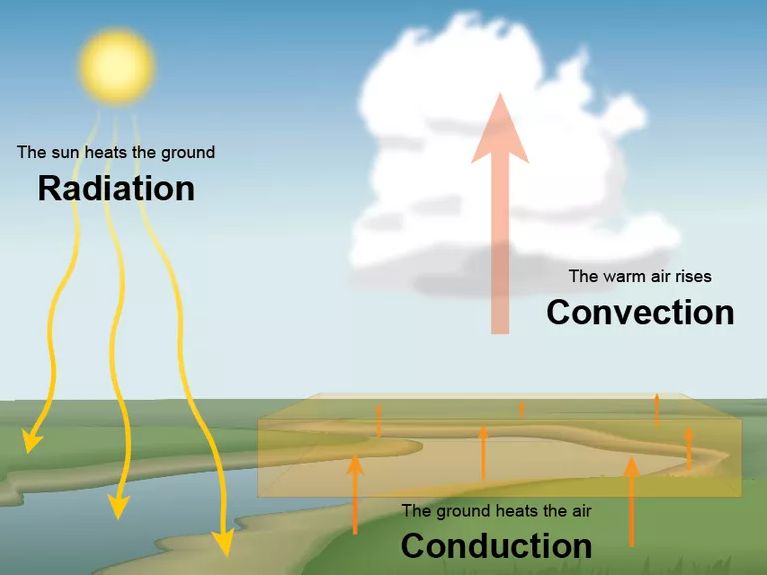
Conduction
When one object touches another heat moves through it (think of a saucepan on a hot stove).
Aluminium foil is a great conductor of heat, which means it is a poor insulator when it is in direct contact with something hot. It is also so thin that heat can pass through it super easily when it has direct contact.
This is they type of heat transfer that aluminium is NOT good at stopping.
Convection
Heat can flow through liquid or gas from one area to another (think of blowdryer blowing hot air across the room or pushing hot water to the other side of a cold bath)
Aluminium foil stops the evaporation of hot water/gas from food as water and air can't pass through it. This stops a lot of heat loss through convection.
Radiation
Heat can move electromagnetically through radiation (think of the sun sending us heat through the vacuum of space or a laser pointer sending light a far distance)
Aluminium foil is also a great reflector of radiant heat, one of the best materials out there actually. So it will reflect almost all thermal heat back towards it source, keeping your food hot or keeping the heat from the sun out of your house in summer.
This is the type of heat transfer that aluminium is AMAZING at stopping.
How Does Aluminium Foil Keep Food Warm?
While aluminium is a metal and thus conducts heat it actually has other properties that make it very effective at keeping food warm.
It Reflects Thermal Radiation
Aluminium has a high emissivity, or it is an amazing reflector of heat radiation. All things that have a temperature above absolute zero lose heat through thermal radiation.
The hotter the food the more heat that is lost through radition.
But covering food in aluminium foil almost all of that radiant heat is going to be reflected back at your food, keeping it warm.
In fact this table shows that aluminium has one of the highest emissivities or reflectiveness of infrared than almost any other material
| Material | Emissivity |
|---|---|
| Aluminium foil | 0.03 |
| Aluminium, anodized | 0.9 |
| Asphalt | 0.88 |
| Brick | 0.90 |
| Concrete, rough | 0.91 |
| Copper, polished | 0.04 |
| Copper, oxidized | 0.87 |
| Glass, smooth (uncoated) | 0.95 |
| Ice | 0.97 |
| Limestone | 0.92 |
| Marble (polished) | 0.89 to 0.92 |
| Paint (including white) | 0.9 |
| Paper, roofing or white | 0.88 to 0.86 |
| Plaster, rough | 0.89 |
| Silver, polished | 0.02 |
| Silver, oxidized | 0.04 |
| Snow | 0.8 to 0.9 |
| Transition metal Disilicides | 0.86 to 0.93 |
| Water, pure | 0.96 |
It's Stops Evaporation
One of the major ways food lose heat is through evaporation.
There is a lot of water in food and as it evaporates and leaves the food it takes a lot of heat with it.
Because water and air can't pass through alfoil this means it traps the water inside the warm food and keeps it warm for longer.
It Traps Air
Aluminium foil scrunches up creating lots of little gaps of air. As we learned in the article on is styrofoam is a good insulator, air is a good insulator and heat struggles to move through air. So creating these air pockets improves the insulation.
If you double layer your aluminium foil then you're getting multiple air pockets which works even better.
How Does Aluminium Foil Keep Houses Cool/Warm?
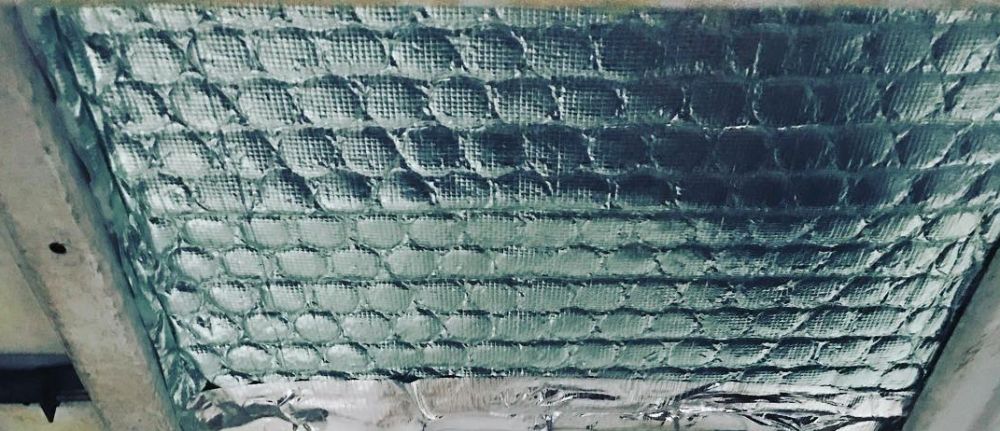
Because of it emissivity (or reflective properties) aluminium insulation is commonly used in the roof as well as the walls of houses in order to keep the house warm in winter and cool in summer.
It works by reflecting the majority of the infrared heat that is trying to come into the house in summer or trying to leave the house in winter.
By itself it's not the best insulator as it only really stops radiant heat, but when combined with another thermal insulation like styrofoam or fibreglass the aluminium reflects the thermal radiation while the other insulation stops the conduction of heat.

Generally speaking aluminium insulation for houses comes like bubble wrap with either the inner or outer layer being aluminium (or both) and plastic bubbles of air in the middle.
The air bubbles work as insulation to stop airflow and to stop heat transfer through convection and conduction while the aluminium layer stops the heat radiation.
How Does Aluminium Foil Keep Bodies Warm in Space Blankets?
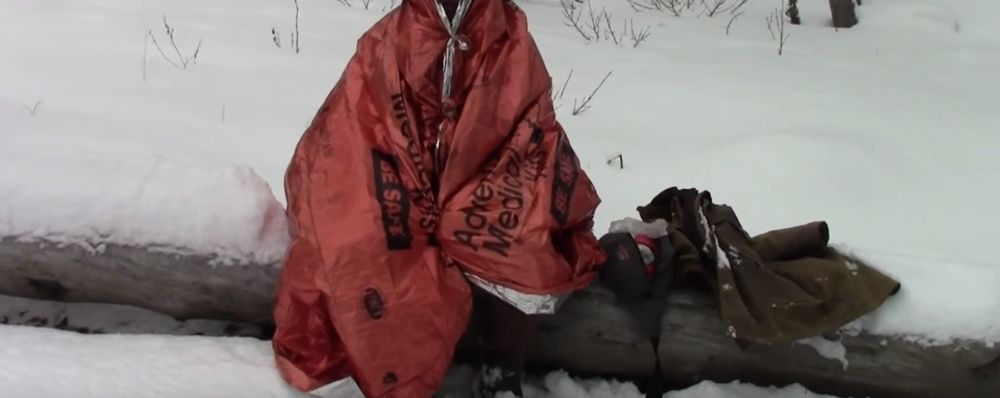
Space blankets are special emergency blankets that are often carried by hikers or used to marathon runners in order to keep warm.
They are super lightweight, pack down really small and if the weather changes on you they can keep you warm enough to survive through the night.
Space blankets are made from a combination of plastic and aluminium so it is strong enough not to tear, but reflective enough to trap some heat.
Regular blankets and sleep bags keep you warm by stopping conduction and convection of heat through the use of lots of little air pockets. Space blankets don't work like this.
Space blankets only really reflect back you body's heat radiation.
So putting a space blanket up against your skin won't do a lot because the cold outside air will make the blanket cold and thus your skin cold.
Rather you want to have some air space between you and the space blanket. To do this you hang it loosely over yourself where possible. The blanket itself will get cold, but if it's not touching you then it won't make you cold.
Instead it will invisibly reflect back your body's heat radiation as well as stop the cold wind blowing through your clothes and onto your skin.
These two characteristics will help keep you warm enough to survive. It won't keep you toasty and warm like your duck feather blanket at home, but it'll work well enough that you shouldn't freeze.
There are a lot of different space blankets out there but I recommend this space blanket from Amazon which, while still being cost affordable, is better than a lot of the other brands and is also a bit bigger.
Alternatively click here to see all the different space blanket options at Amazon.
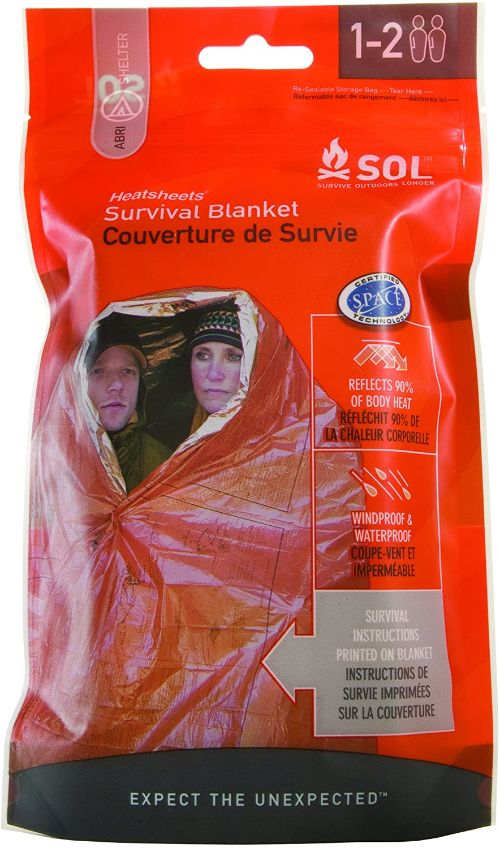
How To Keep Food Warmer Longer Using Aluminium/Tin Foil
Just wrapping your food in aluminium foil will help to keep it warm for a little bit longer, but here are some tips to make the aluminium foil insulate even better and keep your food hotter for longer.
Don't Have Your Food Touching The Foil
Aluminium foil is a great conductor of heat. This means if your hot food is touching it then that heat will pass straight through the alfoil and get released making your food colder.
Where possible have your food not touching the aluminium foil directly.
However, this may not be practical so the other tips below will come in handy.
Use Multiple Layers
By using multiple layers you're doing two things.
Firstly you're increasing how much thermal radiation is reflected back towards your food. If it gets through the first layer it then needs to also get through the second layer.
Secondly but adding two layers you're highly likely creating pockets of air in between each layer. These pockets of air are great insulators and stop heat from easily escaping.
Make Sure It's As Airtight As Possible
As we mentioned earlier part of what makes aluminium foil so good as an insulator for food is that air and water can't pass through it.
This means it can stop the evaporation of water from inside the food which takes a lot of heat with it.
To stop this evaporation make sure your aluminium foil container or packaging completely covers the food so that no air or evaporated water can escape but instead gets trapped inside.
Use a Plastic Container Wrapped In Aluminium Foil
Plastic is a great insulator of heat and stops the conduction of heat (which alfoil isn't good at). But alfoil stops the loss of heat through thermal radiation (which plastic isn't good at stopping).
So if you combine the two by putting your hot food in a plastic container and then wrapping that plastic container in aluminium foil you will get much better heat retention.
The plastic container is more likely to be completely air tight which is good and then there is likely going to be a layer of air between the plastic container and the aluminium foil which helps heat retention even more.
Different Aluminium Foil Options
If you're looking to use aluminium foil to keep your food warm then there are a few different options available to you
Aluminimum Foil
The basic foil that comes in a roll. Wrap your food in it directly or wrap it around your plastic container.
Get some aluminium foil from Amazon

Aluminium Foil Pans
These are a big thicker than aluminium foil and come as a box shape. This is great for putting foods like pasta, rice and curry or even meats and fish in to keep them warm.
Get some aluminium foil pans at Amazon



